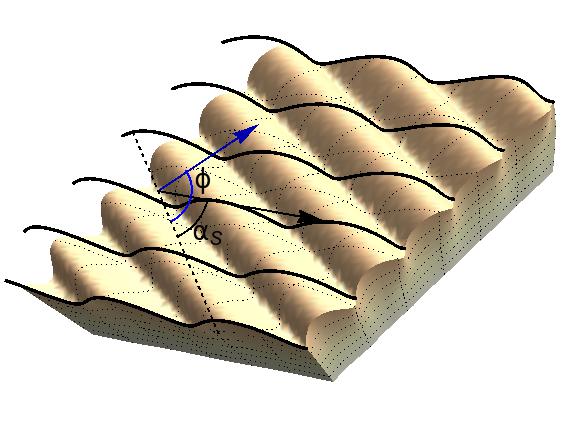Abstract
We prove theoretically that when a soft solid is subjected to an extreme deformation, wrinkles can form on its surface at an angle that is oblique to a principal direction of stretch. These oblique wrinkles occur for a strain that is smaller than the one required to obtain wrinkles normal to the direction of greatest compression. We go on to explain why they will probably never be observed in real-world experiments. This article is part of the themed issue ‘Patterning through instabilities in complex media: theory and applications.

Soft solids, such as silicon, rubber, soft tissues, can undergo large strains and compression. During compression, a wrinkle can form on the material’s surface. These wrinkles are used to, for example: create microlens arrays, tune surface wetting and adhesion. Alternatively, they can be undesirable.
Guided by physical intuition, it was thought that wrinkles always form orthogonal to the direction of greatest compression. In this paper, we demonstrate that wrinkles at different angles (oblique) can supersede all other wrinkles, according to the theory of nonlinear elasticity. This affects both how early wrinkles form and their pattern. However, our table top experiments with gelatin do not confirm these findings. We go to show that a non-oblique creases may supersede our oblique wrinkles. Till today, the competition between creases and wrinkles is still an unresolved issue.